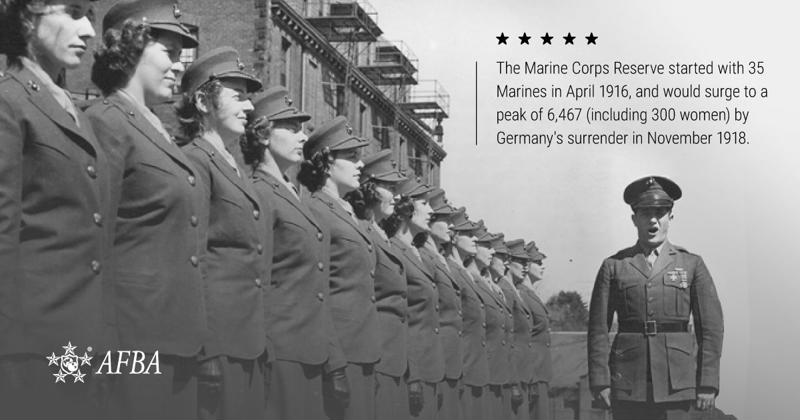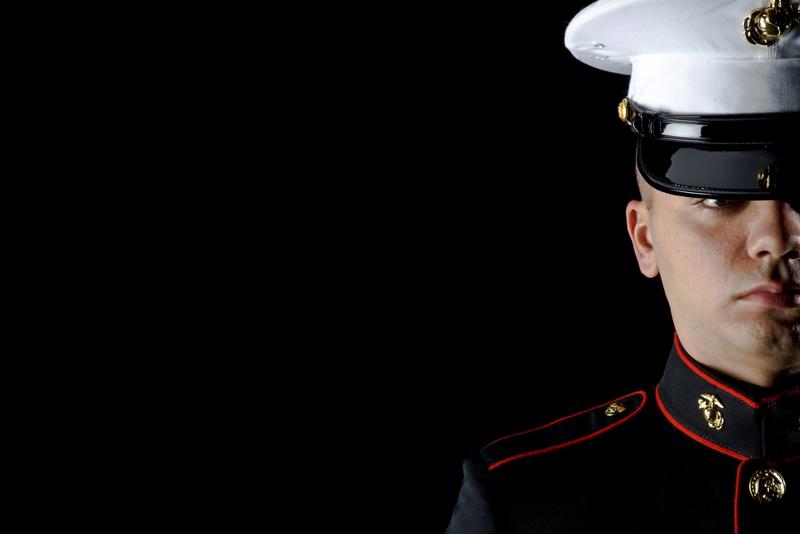The Marines are heralded in the U.S. as some of nation's most skilled and elite warriors, an identity known around the world. Part of that renowned fighting force is the Marine Corps Reserve, a group of service members ready to answer the call of duty whenever it comes. With roots dating back to World War I, the Marine Corps Reserve — also known as the Marine Forces Reserve, or MARFORRES — has a long tradition of excellence and bravery in the armed conflicts America has been a part of, as well in other operational duties.
Aug. 29, 2019, marks the 103rd birthday of the Marine Corps Reserve, an observance and celebration of the men and women who stand at the ready as part of reserve forces. Here's more information about the history and purpose of the MARFORRES.

Contributions in WWI and beyond
According to the Marine Corps, the need for reserves was an issue as early as the Civil War. However, it was not until Woodrow Wilson signed the Naval Appropriations Act of 1916 was such forces were created — and not a moment too soon, as American would join World War I a year later. The Marine Corps Reserve started with 35 Marines on April 1, 1916, and would surge to a peak of 6,467 (including 300 women) by Germany's surrender in November 1918.
The purpose of the MARFORRES is to augment and enhance Marine forces by providing a group of fully trained individuals who can be mobilized for war, national emergencies and contingency operations. This responsive nature to the needs of the nation were on display soon after WWI, when the thousands of Marine reservists demobilized and reentered civilian life. While MARFORRES had fallen into inactivity in the years after, it was quickly rebuilt, growing to more than 10,000 reservists by 1930. Those reserve forces would soon be called on during World War II: According to the Marine Corp, of the nearly 590,000 Marines who served in the war, 70 percent were estimated to be reservists. Whether ace fighter pilots or reporters on the frontlines, reserve forces would earn honors and distinction for their service and importance.
After the war wind-down, the Marine Corps Reserve would reach some 128,000 personnel on the eve of the Korean War, which many participated in. Fast forward to now, and the reserve forces remain among the most crucial cogs to the American armed forces after legislation that has modernized and updated the Marine Corps Reserve for today's military needs. Currently, it is split in two units: the 38,000-strong Marine Corps Select Reserve, and the Individual Ready Reserve.
Fighting modern threats
Today, the Marine Corps Reserve is active in addressing the many global threats the U.S. faces today, including serving in Iraq and Afghanistan, as well as other counter-terror combat operations. Providing peacetime aid is a large focus for the reserve forces, who assist in national and state emergencies. Also, the Marine Corps Reserve is made of diverse Americans. According to the Marine Corps, "their experience is extensive and includes occupations such as police officers, fire fighters, federal agents, mechanics, city planners, politicians, truck drivers, information technology and cyber professionals, carpenters, electricians, and business owners. The depth and diversity of experience is a force enabler that adds enormous value to the modern battlefield."
Celebrating MARFORRES
The Marine Corps Reserve birthday may not show up on every calendar, but it's important to remember and honor the sacrifice and service of those who have been part of the reserve forces. In fact, the occasion is often an event observed within the Marines, not commonly with public displays. However, you can opt to fly a Marines flag on Aug. 29 or undertake other activities.


